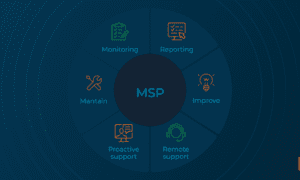Data architect reveals rapid implementation strategies that cut costs by 50% and reduce deployment time from months to weeks
The enterprise data landscape is experiencing a significant transition. According to recent IDC research, 85% of organizations plan to migrate their data infrastructure to cloud-native platforms by 2026, driven by the need for cost reduction and operational efficiency. Yet many companies struggle with lengthy implementation timelines and astronomical consulting fees that can reach hundreds of thousands of dollars for traditional enterprise solutions.
Against this backdrop emerges the success story of Yehor Koriahin, a data architect whose innovative approach has helped major corporations like Nike and global consulting firms achieve dramatic cost savings while accelerating their digital transformation. Currently pioneering the integration of Agentic AI for Data modelling – providing significant reduction in time spent for building BI data models in data warehousing environments – Koriahin represents the cutting edge of 2025’s most significant technological trend. His methodology challenges conventional wisdom about enterprise data architecture, proving that complex systems can be both sophisticated and accessible.
Breaking the Enterprise Complexity Barrier
Koriahin’s approach to cost-efficient data architecture emerged during his tenure at SoftServe, an international IT consulting company, where he faced what seemed like an impossible challenge: migrating large scale data infrastructure from on-premise to AWS for a global management consulting firm. Infrastructure consisted of more than 100+ VMs, 50+ TB of data and complex dependencies and tooling operating between. Traditional enterprise approaches suggested this would require extensive teams, months of planning, and significant business disruption.
“During this project, I realized the need for more flexible and rapid methods for creating data architecture,” Koriahin reflects. “The conventional enterprise approach was fundamentally inefficient – companies were spending 6-9 months just to get their first operational data warehouse version, burning through budgets and resources.” His method enabled completion with near-zero downtime and approximately 80% cost savings results rarely achieved under legacy systems.
This case became a real-world validation of his Rapid Data Architecture Approach, proving its effectiveness at scale. Such exceptional results were made possible due to Koriahin’s unique engineering vision and innovative technical leadership, reflecting his talent as one of the foremost experts in the industry.
The Nike Challenge and Platform Innovation
The true test of Koriahin’s methodology came during his consulting engagement with Nike, the global sportswear and athletic equipment giant, where he participated in designing a central data warehousing solution that would consume data from legacy DB2 systems into a modern Snowflake and AWS-based platform. The project required integrating disparate data sources while maintaining real-time access to critical operational information.
Working as a Solutions Data Architect, Koriahin developed a near-real-time integration strategy that transformed how the global brand approached data accessibility. The implementation enabled Nike to have centralized, scalable access to critical operational data, laying the groundwork for advanced analytics capabilities that previously seemed unattainable for organizations of such complexity.
“Traditional enterprise solutions create dependency on large, specialized teams,” he notes. “My approach focuses on reducing this complexity while maintaining enterprise-grade capabilities.”
As a result, Nike achieved an agile, high-performing analytics infrastructure—one that could evolve rapidly with business needs.This outcome was directly driven by Koriahin’s strategic insights and methodology, underscoring his reputation as a leading force in modern data architecture.
AI-Driven Data Modeling Revolution
Koriahin’s most groundbreaking contribution lies in applying Artificial Intelligence to automate star schema design and dimensional modeling processes. His research demonstrates that large language models like GPT-4, Google Gemini, and Meta LLaMA can dramatically accelerate database schema generation while maintaining enterprise-grade accuracy. This methodology represents a fundamental shift in how the entire data architecture industry approaches complex system design. The shift was catalyzed by Koriahin’s groundbreaking contributions, his distinctive methodology, developed through years of high-level expertise, has redefined industry norms.
“Manual schema design is labor-intensive and error-prone in large-scale environments,” Koriahin explains. “AI can reduce development time by over 80% while increasing accuracy and consistency.” His experimental results show that AI-assisted modeling achieves 91% accuracy in schema generation, with development time dropping from 18 hours to just 2 hours for initial design. These improvements directly translate to cost savings and time-to-market advantages, especially for U.S.-based startups that need lean, scalable systems fast.
Moreover, Koriahin implemented Agentic AI frameworks that autonomously monitor data pipelines, optimize ETL performance, and execute recovery without human input, delivering unprecedented levels of automation.
The methodology leverages LLMs to automatically infer schema structures, enforce relational integrity, and enhance semantic alignment. Using structured output parsers and validation frameworks, the AI generates production-ready SQL DDL and maintains consistency across complex data warehouse implementations. Beyond modeling, Koriahin has extended AI integration to operational aspects, implementing Agentic AI frameworks that allow autonomous agents to monitor data pipelines, optimize ETL performance, and trigger corrective actions without human intervention..
Expanding Industry Impact
Currently serving as Data Architect at Arizent, a financial media and data company, Koriahin continues to refine his methodology while building scalable frameworks that can be adopted across industries. His innovative developments have influenced multiple organizations to standardize cloud-native ELT pipelines and lightweight modeling frameworks as internal best practices.
Companies across sectors from finance to e-commerce report significant gains from adopting his framework, including faster decision cycles, reduced consulting overhead, and more autonomy for internal teams. These widespread benefits highlight Koriahin’s influence as a pioneer whose expert-designed systems are actively reshaping industry practices.
The consulting requests he receives – ranging from technology audits to executive consulting for CTOs – reflect growing industry recognition of his methods. With annual compensation comparable to senior engineers at FAANG companies like Amazon, Apple, and Netflix, his services represent premium positioning in a competitive market, yet organizations consistently report that the investment delivers immediate returns through reduced implementation costs and accelerated timelines.
Revolutionary Cost-Performance Metrics
The impact of Koriahin’s methodology extends far beyond individual implementations. Companies adopting his Rapid Data Architecture Approach report consistent results: 40-60% reduction in time-to-market for data analytics MVPs, with typical delivery timelines shrinking from 6-9 months to 8-12 weeks. At the same time, they realize 30–50% cost savings and significantly improved resilience critical metrics in fast-paced industries like SaaS, fintech, and healthtech. More significantly, organizations achieve 30-50% reduction in infrastructure and licensing costs while simultaneously improving system resilience. These metrics have become new industry standards, forcing traditional consulting firms to reconsider their pricing models and implementation approaches. Crucially, these new benchmarks were set through Koriahin’s framework, marking him as a key figure behind a global shift in data strategy expectations.
At Goodiebox, a European marketing and e-commerce company, where Koriahin served in a key capacity designing and developing a complete cloud-native data analytics platform on Google Cloud Platform, his architecture enabled the company to scale across European markets while reducing manual data handling by more than 50%. The platform incorporated machine learning models for customer behavior forecasting, capabilities that many companies consider prohibitively complex or expensive. The success of this implementation, driven by Koriahin’s technical leadership, has influenced similar companies across the e-commerce sector to adopt cloud-native approaches, creating a ripple effect throughout the industry
These results represent more than incremental improvements – they demonstrate a fundamental shift in how enterprise data architecture can be approached. Data processing capacity increased by 200-300% without proportional cost increases, while systems gained the ability to handle multi-million record datasets while maintaining query performance.
Economic Impact and Market Competitiveness
Koriahin’s methodology extends beyond technical innovation to drive measurable economic impact for American businesses. At Arizent, a major financial media company serving institutional investors, his data architecture improvements enhanced the company’s ability to deliver real-time financial insights, strengthening its position in the competitive fintech sector. Similarly, his work with Nike enabled the global brand to accelerate decision-making processes through centralized data access, reinforcing the company’s market leadership in the multi-billion dollar athletic industry.
By enabling U.S. companies to launch data-driven systems quickly and efficiently, Koriahin’s approach boosts national competitiveness, reducing reliance on expensive foreign software and accelerating digital maturity. This nationwide impact reflects his exceptional standing as a thought leader whose strategies empower systemic progress at the highest level.
The broader economic implications are significant. By reducing implementation costs by 30-50% and cutting deployment timelines from months to weeks, companies can redirect substantial resources toward innovation and market expansion rather than infrastructure overhead. This approach also reduces dependency on expensive foreign enterprise solutions like SAP and Oracle, enabling American companies to build efficient, cloud-native platforms that enhance their global competitiveness through faster digital transformation capabilities. The cumulative effect creates a competitive advantage for US-based enterprises in rapidly evolving digital markets, particularly against international competitors who remain tied to traditional, slower implementation approaches. These strategic advantages are the direct result of Koriahin’s expert contributions, his talent and foresight continue to elevate U.S. data infrastructure on the global stage.
Future of Enterprise Data Architecture
As organizations worldwide grapple with digital transformation challenges, Koriahin’s methodology offers a blueprint for navigating complexity without sacrificing capability. His plans to scale consulting services and establish recognition as a leading service provider for startups and mid-sized companies suggest that rapid, cost-effective data architecture will become increasingly accessible.
“The traditional enterprise mindset assumes that sophisticated capabilities require sophisticated implementations,” Koriahin observes. “But when you can deliver the same results in weeks instead of months, at a fraction of the cost, it forces the entire industry to reconsider what’s actually necessary versus what’s just conventional.”
The numbers speak for themselves: when companies can reduce their data platform implementation time by more than half while cutting costs by 30-50%, traditional enterprise approaches face serious questions about their continued relevance. Koriahin’s track record suggests that the future belongs to architects who can deliver enterprise capabilities without enterprise complexity.





























